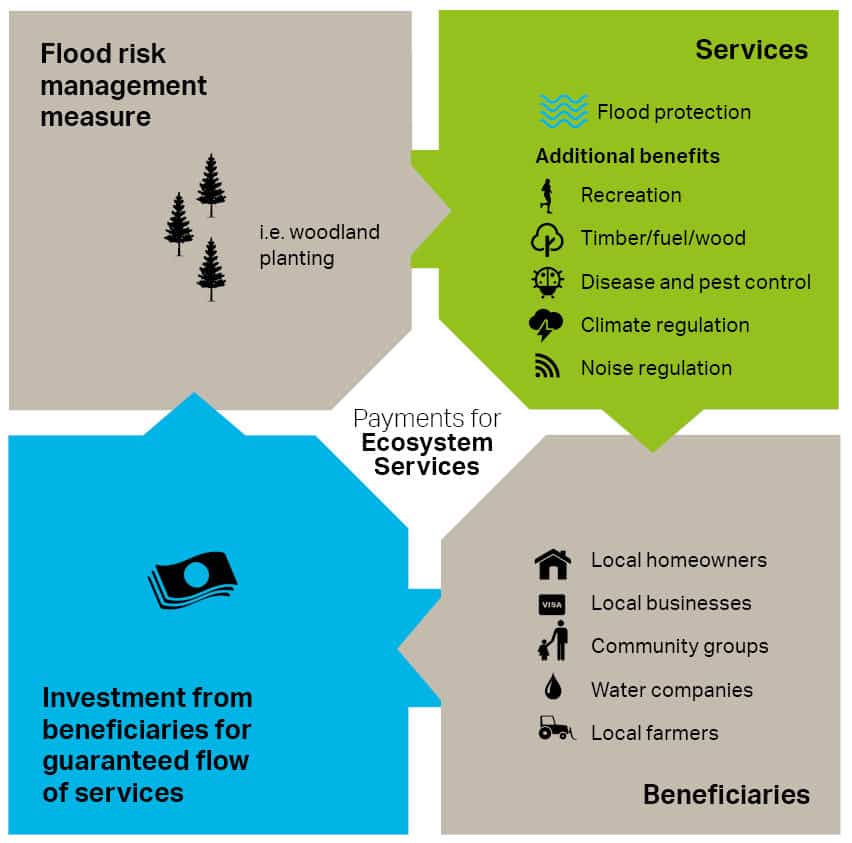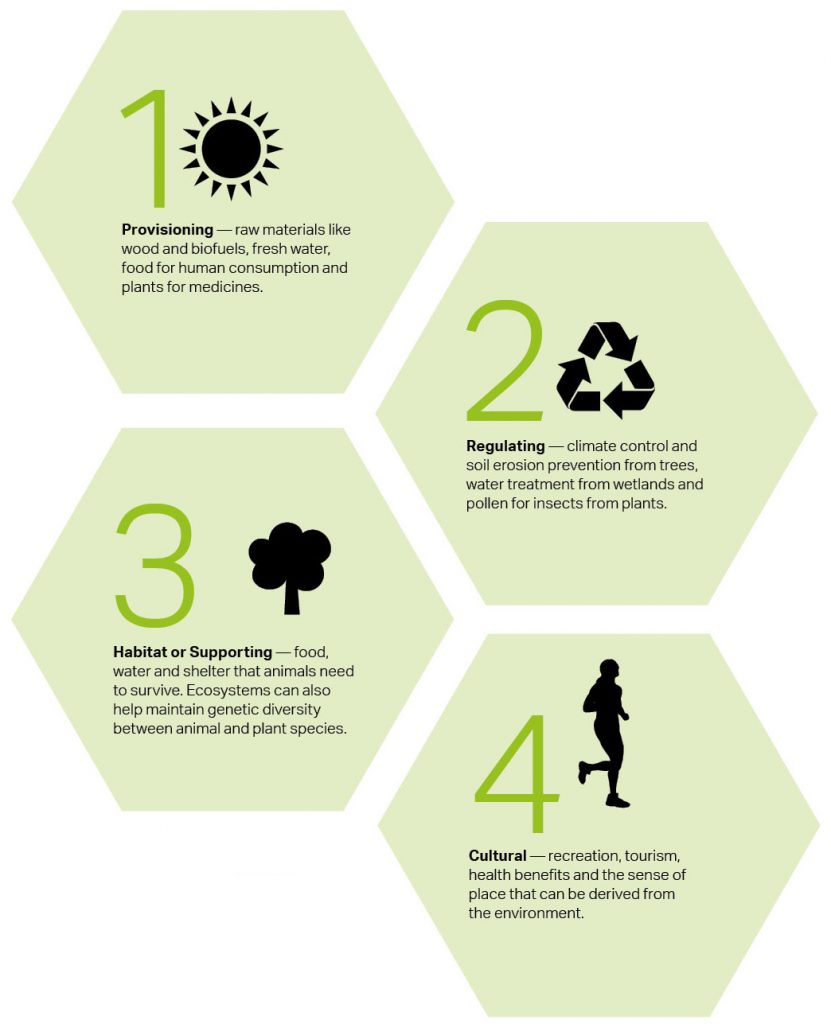Going back to nature
At a time when protecting the environment and cutting costs are top priorities for flood risk managers, putting a monetary value on nature makes a lot of sense, write associate hydrologist Carl Pelling and sustainability consultant Penelope Borton
Some people may question whether you can put a price tag on a wetland or on trees that sit along a riverbank. But identifying and valuing the wider benefits of natural flood management measures could incentivise different organisations and groups to invest in them, helping meet partnership funding needs. The world’s natural environment — or natural capital as it’s sometimes referred to — provides a range of benefits to society, known as ecosystem services, such as air filtration from trees and flood protection from wetlands.
By taking what’s known as an ecosystem services approach (ESA) to developing flood management schemes, we can assess the value the more natural flood risk measures can provide, such as increasing biodiversity and water filtration.
Within flood risk management in the UK, this approach is being driven by the government’s National Flood Resilience Review and Future Flood Prevention Report 2016/17, which both advocate catchment-wide measures including natural flood risk management techniques to protect communities from flooding.
Building the case for investment
The benefits of taking this ‘back to nature’ approach go way beyond just flood protection. For example, removing engineered flood banks from a river to help it return to its natural floodplain, would allow the river to flood more regularly, improve flood storage, hold back water from flowing downstream, create new wetland habitats, enrich floodplain soils with sediments and create recreational areas for people to enjoy. By adopting an ecosystem services approach, flood risk managers can identify which flood management options will generate additional benefits and the value these will add to the community. With this information to hand, it becomes much easier for them to build the case for investment from local communities, businesses and organisations.
Partnership funding
With limited centralised government funding for flood management schemes and pressure to make the money to go further, valuing ecosystem services puts flood risk management authorities in a much better position to attract partnership funding from other beneficiaries such as landowners, farmers and communities. This partnership funding can increase the likelihood of a scheme getting off the ground, thereby meeting the criteria needed to release central funding.
Good for everyone
Payments for ecosystem services, or ‘beneficiary pays’, is pretty straightforward — those who benefit from ecosystem services pay the economic value that they get from them. The ‘beneficiaries’ of ecosystem services, such as businesses and communities, or governments acting on behalf of these groups, make payments to land or natural resource managers in return for a guaranteed flow of ecosystem services. So for example, a water company could pay for farmers to use alternative fertilisers because the process improves water quality, meaning they will need to spend less on water treatment. And the same principle applies to flood risk management.

More sustainable protection
So in a climate where financial resources are limited, value for money is key. The natural environment is also deteriorating rapidly.
Identifying and valuing ecosystem services provided by flood management measures gives flood risk managers a holistic way to strengthen the level of protection that they provide to communities while protecting the environment.
Ultimately, adopting an ecosystem services way of thinking and encouraging different organisations and groups to invest in nature’s own defences will lead to more joined-up, cost-effective and sustainable flood management.
Cutting through the complexity
 To simplify what can be a complex process, AECOM has developed a tool called Ecosystem Services: Identification, Valuation and Integration (ESIVI). Using GPS devices and spreadsheets to map and identify ecosystem services, ESIVI can be used to plan and deliver flood risk management schemes to rapidly identify what ecosystem services are provided by a scheme’s natural capital; assess how the services might change under different land management scenarios; identify ways to enhance existing services or create new ones; and estimate their monetary value.
To simplify what can be a complex process, AECOM has developed a tool called Ecosystem Services: Identification, Valuation and Integration (ESIVI). Using GPS devices and spreadsheets to map and identify ecosystem services, ESIVI can be used to plan and deliver flood risk management schemes to rapidly identify what ecosystem services are provided by a scheme’s natural capital; assess how the services might change under different land management scenarios; identify ways to enhance existing services or create new ones; and estimate their monetary value.
Armed with that information, we can help flood risk management authorities better identify the opportunities as well as the impacts of their potential flood risk management schemes. We’re currently trialling the ESIVI tool with the EA which is helping determine the most appropriate schemes to progress, by highlighting those which are most likely to get funding based on the benefits and services they provide.
The four types of ecosystem sevices

Realising nature’s value with Yorkshire Water
To help Yorkshire Water meet its vision of ‘taking responsibility for the water environment for good’, we are working with the company to develop a set of physical metrics and financial valuation methods for natural, human, and social capital. This will enable it to compare the environmental and social values generated as part of different operational and investment scenarios and make more informed decisions across all its business activities.
As part of this project we undertook an initial pilot study at Rivelin water treatment works, Sheffield, to assess the natural capital impacts of a series of alternative upgrade schemes.
We valued the natural capital impacts of land use change, operational resource use and building design, and were able to demonstrate how optioneering had delivered greater value from the water treatment works for the same financial cost by choosing an innovative upgrade solution.






